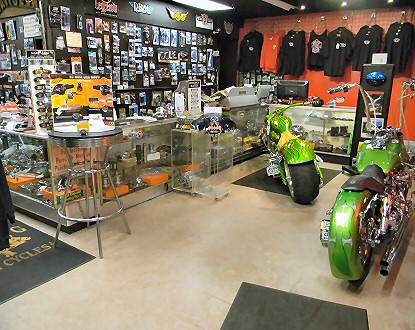Discover High Quality Moto Parts NZ for All Your Motorcycle Needs
Discover High Quality Moto Parts NZ for All Your Motorcycle Needs
Blog Article
Comprehending the Important Parts of a Motorcycle: A Comprehensive Overview for Lovers
For motorcycle fanatics seeking to raise their riding experience and ensure their bikes run efficiently, understanding the necessary components of a bike is vital. Each element, from the engine's complex operations to the important role of the braking devices, not only influences efficiency but also safety and comfort. This overview will certainly walk via the essential parts that every biker must be familiar with, allowing educated options in both upkeep and possible upgrades. As we begin this expedition, one must ask: how does each part connect to develop the smooth experience every lover seeks?
Engine Elements

The camshaft plays a vital function in regulating the timing of the engine's valves, making certain the exact opening and closing necessary for effective gas and air intake, along with exhaust expulsion. This timing is vital to maintaining ideal engine efficiency and efficiency. Furthermore, the carburetor or gas injection system, depending upon the bike model, is liable for blending air with fuel in the right proportion for combustion.
The air conditioning system, either air or liquid-based, functions to keep the engine's temperature within operational limits, stopping getting too hot and ensuring longevity - motorbike shop. Each component, meticulously developed and incorporated, adds to the smooth procedure of the engine, specifying the motorcycle's power output and overall performance
Transmission System
Important to the bike's capability, the transmission system ensures efficient power transfer from the engine to the wheels. This system makes up several critical elements, including the clutch, transmission, and last drive, each playing an essential role in translating the engine's power into movement. The clutch, usually run by a hand bar, offers to disengage the engine and engage from the transmission, permitting smooth equipment adjustments and regulated acceleration.
The gearbox, often described as the transmission correct, has a collection of gears that bikers can manually shift via to readjust the bike's speed and torque outcome. These gears are arranged in a series that makes it possible for the motorbike to speed up smoothly and keep optimum engine performance across various speeds. The majority of bikes use a sequential transmission, requiring the biker to shift gears in a fixed order.
Braking Mechanisms
While recognizing the transmission system is key to utilizing a motorcycle's power, just as crucial is the ability to regulate and quit that power successfully, which is where braking devices come right into play. Brakes are vital for security and efficiency, supplying the biker with the essential control to navigate numerous terrains and problems. Normally, motorcycles include two sorts of braking systems: disc brakes and drum brakes.
Disc brakes are extra prevalent in contemporary bikes due to their premium performance. This system provides much better warmth dissipation, consistent performance, and boosted quiting power, especially in wet problems.
On the other hand, drum brakes, though much less typical, are still located in some bikes. They function by pressing brake shoes versus the internal surface area of a drum attached to the wheel. While typically much less efficient in warmth dissipation and stopping power, drum brakes are easier and much more economical.
Understanding these braking systems' subtleties enables cyclists to maintain their motorcycles appropriately and appreciate the engineering that makes certain secure and effective quiting.
Suspension and Guiding
Suspension and guiding systems are vital components that considerably influence a motorbike's handling and experience comfort. The shock absorber, being composed of forks at the front and shock absorbers at the rear, absorbs road irregularities, enhancing stability and control. Front forks, inverted or commonly telescopic, compress and rebound to minimize influences, while back shock absorbers preserve tire contact with the road, essential for traction and safety.
Guiding, centered around the handlebars, attaches the cyclist to the motorbike's directional control. The steering head bearings guarantee smooth operation, enabling accurate ability to move. Appropriate positioning and maintenance of these bearings are essential for foreseeable steering action and decreasing biker tiredness.
The suspension's adjustability is an additional essential element; preload, damping, and rebound settings permit personalization to suit numerous riding designs and conditions. This versatility is vital for optimizing efficiency, whether navigating city roads or tackling sturdy tracks. Innovations like digital suspension systems use real-time adjustments, boosting trip quality throughout diverse terrains.

Electric Systems
After making sure a controlled and smooth trip through reliable suspension and guiding systems, attention transforms to the electric systems, a critical go to this website facet of modern motorbikes. These systems play a vital role not just in beginning the engine however likewise in powering numerous elements that boost the performance and safety and security of the bike.
At the heart of a motorbike's electric system is the battery, which stores electrical energy needed for starting the engine and powering auxiliary systems - motorcycle parts nz. The alternator or generator, coupled with the rectifier-regulator, guarantees the battery continues to be charged while the bike is in procedure, transforming mechanical power into electrical energy and keeping voltage levels
The ignition system, another important part, is responsible for firing up the air-fuel blend in Read More Here the engine's cyndrical tubes. Modern bikes often utilize an electronic ignition system, providing higher effectiveness and integrity contrasted to typical systems.
Lights systems, consisting of fronts lights, tail lights, and indicators, are also vital, ensuring visibility and safety for the rider. Additional digital elements such as sensing units, control devices, and shows add to advanced features like gas injection monitoring, anti-lock stopping systems (ABDOMINAL), and digital dashboards, further enhancing the riding experience.
Conclusion
A thorough understanding of a bike's necessary elements, consisting of the engine, transmission system, stopping mechanisms, suspension, guiding, and electrical systems, is crucial for enthusiasts intending to optimize safety and security, comfort, and efficiency. Proficiency of these elements enables for Visit Your URL informed decisions pertaining to upkeep and upgrades, ultimately improving the riding experience. By incorporating this understanding, riders can guarantee their motorcycles operate at peak performance and reliability, therefore taking full advantage of both enjoyment and long life of their vehicles.
For motorbike lovers looking to boost their riding experience and ensure their bikes run efficiently, comprehending the essential parts of a motorcycle is vital.Integral to the motorcycle's capability, the transmission system makes sure efficient power transfer from the engine to the wheels.While understanding the transmission system is crucial to harnessing a motorbike's power, just as vital is the capacity to regulate and stop that power efficiently, which is where braking mechanisms come into play. Generally, motorbikes include 2 kinds of stopping systems: disc brakes and drum brakes.
A thorough comprehension of a motorcycle's crucial elements, including the engine, transmission system, braking mechanisms, suspension, steering, and electric systems, is essential for enthusiasts intending to optimize convenience, performance, and safety and security.
Report this page